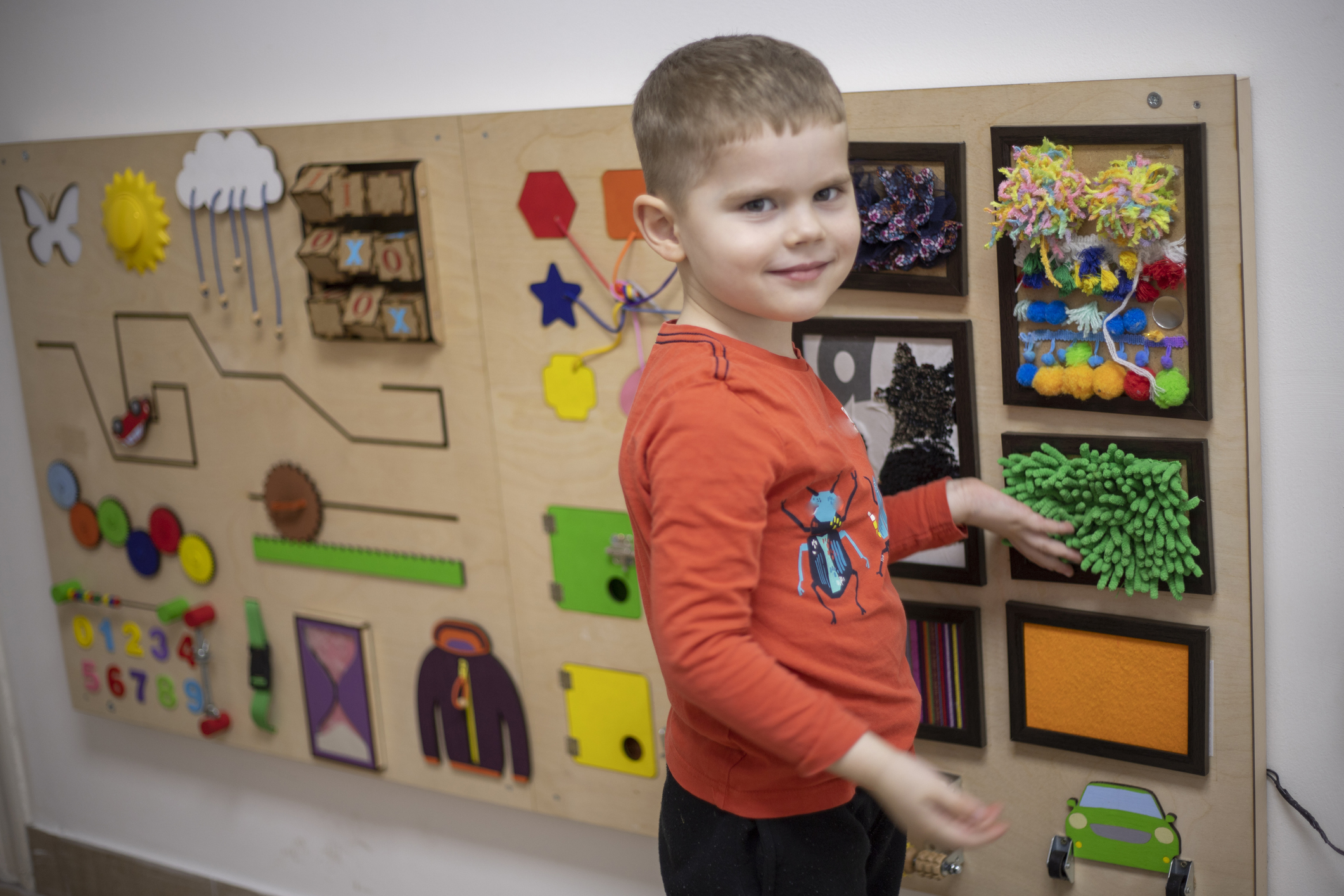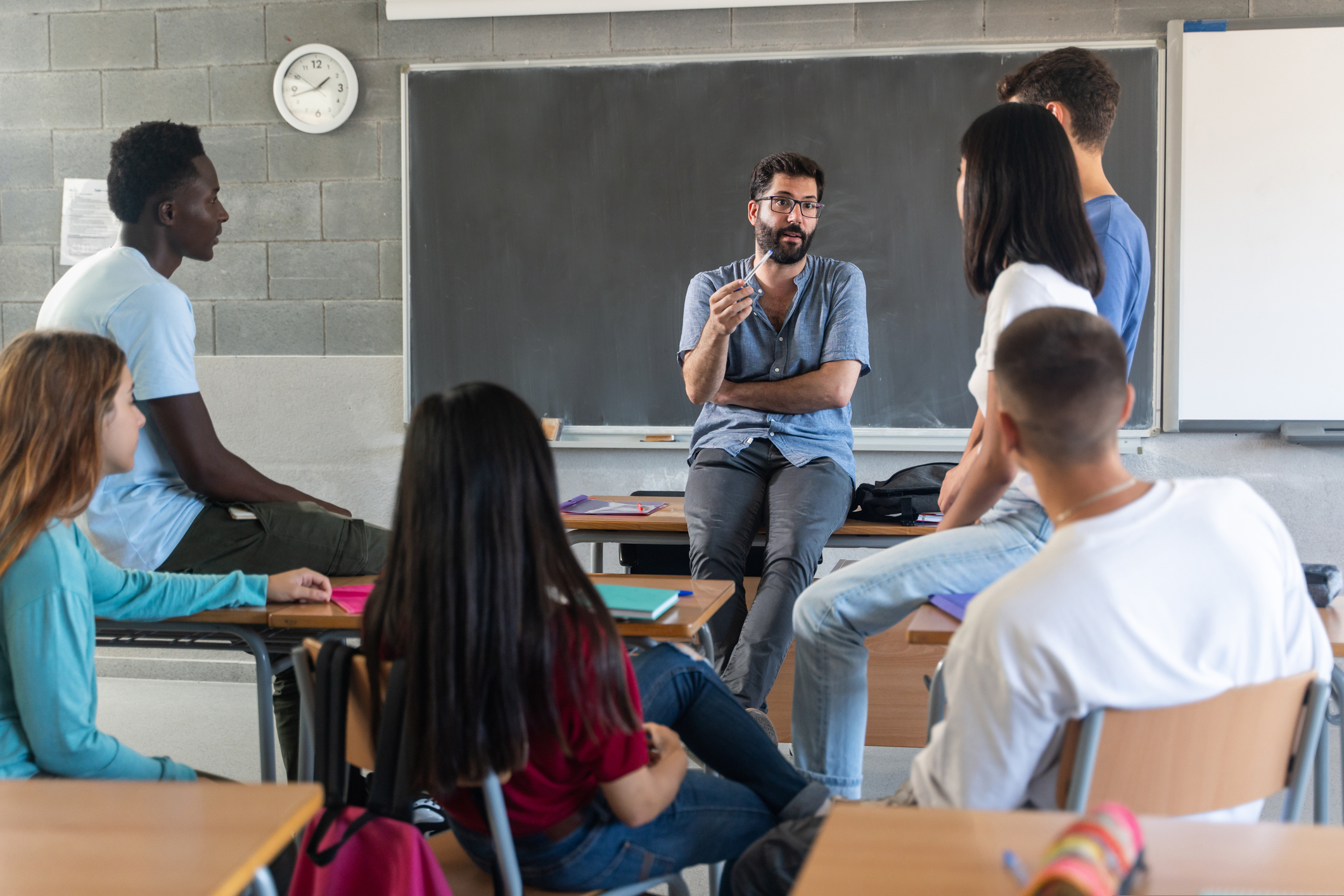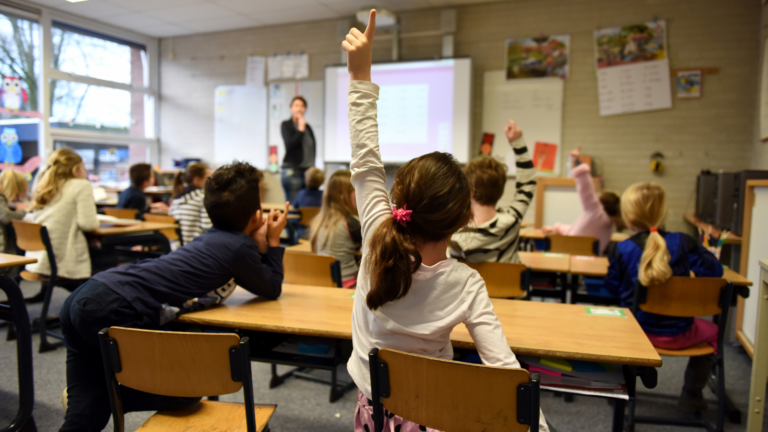In today’s educational landscape, empowering student voices has become a crucial aspect of fostering a dynamic and engaging learning environment. When students are allowed to actively participate and collaborate in their education, they not only develop essential skills but also feel a sense of ownership and pride in their learning journey. This blog post will explore the importance of students’ voices, discuss strategies to encourage active participation, delve into methods to foster collaboration, address challenges in empowering student’s voices, and highlight successful case studies of its implementation. By the end of this post, you will understand how empowering student voices can have a profound impact on their overall educational experience.
Understanding the Importance of Student Voice
Student voice refers to the active involvement and participation of students in their learning process. It encompasses their opinions, ideas, perspectives, and contributions within the classroom setting. Understanding the importance of student’s voices is essential for educators and educational institutions to create a student-centred learning environment that nurtures critical thinking, creativity, and collaboration.
1.1 The Benefits of Student Voice:
– Enhanced engagement: When students are encouraged to voice their thoughts and opinions, they become more engaged in the learning process, leading to increased motivation and interest.
– Development of critical thinking skills: By expressing their ideas and engaging in discussions, students learn to think critically, analyze information, and form well-reasoned arguments.
– Ownership of learning: When students have a say in their education, they develop a sense of ownership and responsibility for their learning journey, leading to increased self-motivation and dedication.
– Enhanced problem-solving skills: Through active participation, students learn to identify and analyse problems, propose solutions, and collaborate with peers to find effective resolutions.
– Empowerment and self-confidence: When students are allowed to express their thoughts and ideas, it boosts their self-confidence and empowers them to actively participate in classroom activities.
1.2 The Role of Student Voice in Personalized Learning:
– Personalised learning focuses on tailoring education to meet the unique needs, interests, and abilities of each student. Student voice plays a crucial role in this approach by allowing students to have a say in their learning goals, preferences, and pace.
– By incorporating student voice, educators can create a more personalised learning experience that aligns with the individual strengths and interests of students, leading to greater engagement and academic success.
1.3 The Connection between Student Voice and Academic Achievement:
– Research has shown a positive correlation between student voice and academic achievement. When students are actively engaged in their education, their performance improves across various subjects and assessments.
– By encouraging student voice, educators can tap into students’ intrinsic motivation, fostering a love for learning and a desire to excel academically.
1.4 Cultivating a Culture of Student Voice:
– Creating a culture of student voice requires a supportive and inclusive classroom environment where students feel safe to express their thoughts and opinions.
– Educators can establish open lines of communication, encourage active listening, and provide opportunities for students to share their ideas and perspectives.
– By valuing and respecting student voices, educators can create a collaborative and empowering learning environment that benefits all learners.
Understanding the importance of student voice lays the foundation for creating an educational experience that prioritises active participation, collaboration, and student agency. In the following sections, we will explore strategies to encourage active participation in students and methods to foster collaboration among them.
Strategies to Encourage Active Participation in Students
Encouraging active participation in students is vital for creating an engaging and inclusive classroom environment. When students actively participate, they become more invested in their learning, develop essential skills, and contribute to a collaborative learning community. This section will explore various strategies that educators can employ to foster active participation among their students.
0.1 Creating a Safe and Open Classroom Environment:
– Establishing a safe and inclusive classroom environment is essential for encouraging active participation. Students should feel comfortable expressing their thoughts and ideas without fear of judgment or ridicule.
– Encourage respect and empathy among students, fostering a supportive atmosphere where everyone’s opinions are valued.
– Implement clear guidelines for communication and establish norms for active participation, such as taking turns, active listening, and constructive feedback.
0.2 Incorporating Interactive Teaching Methods:
– Utilize interactive teaching methods that promote active engagement and participation. These methods can include:
– Hands-on activities: Incorporate experiments, simulations, or group projects that require students to actively engage with the subject matter.
– Discussion-based learning: Facilitate meaningful discussions where students can express their thoughts, ask questions, and engage in debates.
– Inquiry-based learning: Encourage students to explore and investigate topics independently, fostering curiosity and critical thinking.
– Role-playing and simulations: Engage students in realistic scenarios that require active participation, problem-solving, and decision-making.
0.3 Promoting Self-expression and Original Thinking:
– Provide opportunities for students to express their thoughts and ideas in various formats, such as written reflections, presentations, or creative projects.
– Encourage students to think critically and independently, fostering originality and creativity in their contributions.
– Value diverse perspectives and encourage students to challenge conventional thinking, promoting intellectual growth and a broader understanding of the subject matter.
0.4 Encouraging Active Questioning and Inquiry:
– Foster a culture of curiosity by encouraging students to ask questions and pursue inquiries about the subject matter.
– Create a supportive environment where students feel comfortable seeking clarification, sharing their doubts, and engaging in discussions centred around their inquiries.
– Provide resources and guidance to help students explore their questions further, promoting independent thinking and a deeper understanding of the topic.
0.5 Incorporating Technology for Active Participation:
– Utilise technology tools and platforms that encourage active participation, collaboration, and interaction among students.
– Online discussion boards, virtual classrooms, and collaborative document editing platforms can provide students with opportunities to engage in meaningful discussions and share their ideas.
– Use digital assessment tools that allow students to provide instant feedback and actively participate in the evaluation process.
By implementing these strategies, educators can create an environment that fosters active participation, empowers students to voice their thoughts, and cultivates a love for learning. The next section will explore methods to foster collaboration among students, further enhancing their educational experience.
Methods to Foster Collaboration Among Students
Fostering collaboration among students is essential for developing teamwork skills, promoting effective communication, and creating a supportive learning community. Collaboration enables students to learn from one another, share ideas, and collectively solve problems. This section will explore various methods that educators can employ to foster collaboration among students.
1.1 Group Projects and Team Building Activities:
– Assign group projects that require students to work together towards a common goal. This not only promotes collaboration but also enhances problem-solving skills, communication, and interpersonal skills.
– Provide clear guidelines and roles for each group member to ensure equal participation and contribution.
– Incorporate team-building activities at the beginning of the project to help students develop trust, establish positive relationships, and foster a sense of group identity.
1.2 Peer Review and Feedback:
– Encourage students to provide constructive feedback to their peers to enhance their learning experience.
– Implement peer review sessions where students can give and receive feedback on each other’s work, promoting critical thinking and improving the quality of their projects.
– Provide guidelines for effective feedback, emphasizing the importance of constructive criticism, respect, and specific suggestions for improvement.
1.3 Using Technology to Enhance Collaboration:
– Utilise technology tools and platforms that facilitate collaboration among students, even in remote or hybrid learning environments.
– Online collaboration platforms, such as Google Docs or Microsoft Teams, allow students to work together on shared documents, providing real-time feedback and fostering collaborative problem-solving.
– Virtual whiteboards or mind-mapping tools can be used for brainstorming and organizing ideas collectively.
– Discussion forums or online chat platforms can promote asynchronous collaboration, allowing students to engage in discussions outside of the classroom setting.
1.4 Encouraging Interdisciplinary Projects:
– Design projects that require students from different disciplines to collaborate and integrate their knowledge and skills.
– By working together on interdisciplinary projects, students gain a broader perspective, develop a deeper understanding of different subjects, and enhance their problem-solving abilities.
– Encourage students to share their expertise and learn from others, fostering a sense of collaboration and mutual respect.
1.5 Facilitating Collaborative Learning Spaces:
– Create physical or virtual learning spaces that encourage collaboration and interaction among students.
– Arrange desks or seating areas in a way that promotes group work and discussion.
– Provide resources and materials that facilitate collaboration, such as whiteboards, markers, or digital collaboration tools.
– Encourage students to form study groups or learning communities where they can support and learn from one another.
By implementing these methods, educators can create a collaborative learning environment that fosters teamwork, communication, and mutual support among students. The next section will address the challenges in empowering student voices and provide solutions to overcome them.
Challenges in Empowering Student Voice and Solutions
Empowering student voices is not without its challenges. Educators may encounter various obstacles that hinder students’ active participation and collaboration. However, by understanding these challenges and implementing effective solutions, educators can overcome them and create an environment where student voice thrives. This section will explore some common challenges in empowering student voices and provide practical solutions to address them.
2.1 Overcoming Hesitation and Fear of Speaking Up:
– Challenge: Some students may hesitate to speak up or share their thoughts due to shyness, fear of judgment, or lack of self-confidence.
– Solution:
– Create a safe and supportive classroom environment where students feel comfortable expressing their opinions without fear of criticism.
– Implement icebreaker activities or warm-up exercises to foster a sense of community and build students’ confidence in sharing their ideas.
– Provide opportunities for students to practice public speaking through presentations or debates, gradually increasing their comfort level.
2.2 Dealing with Dominant Voices in the Class:
– Challenge: Certain students may dominate classroom discussions, overpowering the voices of others and hindering equitable participation.
– Solution:
– Set clear expectations for equal participation and respectful listening from all students.
– Implement strategies such as “think-pair-share” or “round-robin” discussions, where all students have the opportunity to contribute and share their thoughts.
– Encourage students to actively listen and respond to their peers’ ideas, fostering a culture of respect and collaboration.
2.3 Facilitating Constructive Discussions:
– Challenge: Engaging in meaningful and constructive discussions can be challenging when students have differing opinions or struggle to articulate their thoughts effectively.
– Solution:
– Teach students effective communication skills, such as active listening, paraphrasing, and using respectful language.
– Provide clear guidelines for discussions, emphasising the importance of constructive feedback, evidence-based arguments, and respectful disagreement.
– Model and scaffold discussions by providing sentence starters, discussion prompts, or guiding questions to support students in expressing their ideas.
2.4 Addressing Time Constraints:
– Challenge: Limited class time can pose a challenge in providing ample opportunities for all students to actively participate and collaborate.
– Solution:
– Prioritise and plan activities that maximize student engagement and participation.
– Incorporate strategies such as small group discussions, quick group brainstorming sessions, or timed debates to encourage active participation within shorter time frames.
– Utilise technology tools that allow for asynchronous collaboration, extending student participation beyond classroom hours.
2.5 Providing Support for Diverse Learners:
– Challenge: Different students may have varying levels of comfort or ability to express themselves, requiring tailored support to ensure their voices are heard.
– Solution:
– Differentiate instruction by providing various means of expression, such as written assignments, visual presentations, or multimedia projects, to accommodate different learning styles and preferences.
– Offer individualised support and feedback to students who may require additional guidance in communicating their ideas effectively.
– Foster a culture of inclusivity and respect, where diverse perspectives are valued and appreciated.
By addressing these challenges and implementing effective solutions, educators can empower student voices, encourage active participation, and foster a collaborative learning environment. In the next section, we will explore successful case studies that highlight the implementation of student voice in classrooms.
Case Studies: Successful Implementation of Student Voice in Classrooms
The successful implementation of student voice in classrooms provides valuable insights into the strategies and practices that have effectively empowered students and fostered active participation and collaboration. This section will showcase a selection of case studies that highlight real-world examples of how educators have successfully incorporated student voices in their classrooms.
3.1 Case Study 1: The Student-led Classroom Newspaper
– Description: In this case study, a high school English teacher implemented a student-led classroom newspaper as a way to empower student voice. Students were responsible for generating article ideas, conducting research, writing articles, and designing the newspaper layout.
– Results: The project not only enhanced students’ writing and research skills but also fostered collaboration as students worked together to meet deadlines and create a high-quality newspaper. Students felt a sense of ownership and pride in their work, leading to increased engagement and active participation in the classroom.
3.2 Case Study 2: Student-led Discussions in Science Class
– Description: In this case study, a middle school science teacher implemented student-led discussions as a means to promote active participation and critical thinking. Students were assigned rotating roles, such as discussion leader, note-taker, or summariser, and were responsible for facilitating discussions around scientific concepts.
– Results: The student-led discussions encouraged students to actively engage in the learning process, articulate their ideas, and support their arguments with evidence. Students developed stronger communication and collaboration skills, and their understanding of scientific concepts deepened through peer-to-peer learning.
3.3 Case Study 3: Student Voice in School Governance
– Description: In this case study, a high school implemented a student council with decision-making power to involve students in the governance of the school. The student council comprised elected representatives from various grade levels who actively participated in discussions and decision-making processes.
– Results: The student council allowed students to voice their opinions, concerns, and ideas regarding school policies and activities. Students felt empowered and developed leadership skills as they collaborated with teachers and administrators to make meaningful changes within the school community.
3.4 Case Study 4: Project-based Learning and Student Voice
– Description: In this case study, an elementary school teacher implemented project-based learning (PBL) units that incorporated student voice. Students were allowed to choose topics of interest, design their projects, and present their findings to the class.
– Results: The PBL approach empowered students to take ownership of their learning, fostering active participation and collaboration. Students became more engaged, developed research and presentation skills, and demonstrated a deeper understanding of the subject matter.
These case studies demonstrate the positive impact of empowering student voices in classrooms. They highlight the benefits of incorporating student-led initiatives, promoting active participation, and fostering collaboration. Educators can draw inspiration from these examples and tailor their practices to suit their specific classroom contexts. In the concluding section, we will reflect on the overall impact of empowering student voices in education.
Conclusion: The Impact of Empowering Student Voice
Empowering student voices and encouraging active participation and collaboration in the classroom have far-reaching implications for students’ educational experience and overall development. Throughout this blog post, we have explored the importance of student voice, strategies to promote active participation, methods to foster collaboration, challenges in empowering student voice, and successful case studies of its implementation. As we conclude, let us reflect on the impact of empowering student voices in education.
By empowering student voices, educators create an environment that values students’ opinions, ideas, and perspectives. This leads to several positive outcomes:
- Enhanced Engagement and Motivation: When students feel that their voice is heard and valued, they become more engaged and motivated in the learning process. Active participation and collaboration stimulate their curiosity, leading to a deeper understanding and retention of knowledge.
- Development of Critical Thinking and Communication Skills: Engaging in discussions, expressing ideas, and collaborating with peers fosters critical thinking and effective communication skills. Students learn to articulate their thoughts, analyse information, and engage in respectful debates.
- Ownership of Learning: Empowering student voices cultivates a sense of ownership and responsibility for their learning journey. Students become active participants in setting goals, making decisions, and taking initiative in their education, leading to increased self-motivation and commitment to learning.
- Collaboration and Social Skills: Through collaborative activities and projects, students develop essential teamwork and communication skills. They learn to listen to others, respect diverse perspectives, and work together towards common goals—a valuable skill set for their future personal and professional endeavours.
- Enhanced Problem-Solving Abilities: Empowering student voice encourages students to think critically, propose solutions, and collaborate with their peers to solve problems. This nurtures their problem-solving abilities, creativity, and resilience.
- Positive School Climate: When student voice is valued and encouraged, it contributes to a positive school climate. Students feel a sense of belonging, respect, and inclusion, leading to improved overall well-being and a stronger school community.
It is important to acknowledge the challenges that may arise when empowering student voices, such as overcoming hesitations, addressing dominant voices, and facilitating constructive discussions. However, by implementing the strategies and solutions discussed in this post, educators can overcome these challenges and create an environment where student voice thrives.
In conclusion, empowering student voices and promoting active participation and collaboration have transformative effects on students’ educational experience. By valuing their voices, educators empower students to become active learners, critical thinkers, and effective communicators. This not only prepares them for academic success but also equips them with essential skills for their future personal and professional lives. Let us embrace student voices and create classrooms where every student’s voice is heard, valued, and celebrated.
Related posts:
 Understanding Adverse Childhood Experiences (ACEs): A Guide for Incorporating Trauma-Informed Approaches into Teaching
Understanding Adverse Childhood Experiences (ACEs): A Guide for Incorporating Trauma-Informed Approaches into Teaching
 Creating Safe Spaces: Strategies for Fostering Healing and Support in Trauma-Informed Classrooms
Creating Safe Spaces: Strategies for Fostering Healing and Support in Trauma-Informed Classrooms
 Creating Safe Spaces: Strategies for Fostering Healing and Support in Trauma-Informed Classrooms
Creating Safe Spaces: Strategies for Fostering Healing and Support in Trauma-Informed Classrooms
 A Teacher’s Guide to Trauma-Informed Classrooms
A Teacher’s Guide to Trauma-Informed Classrooms



